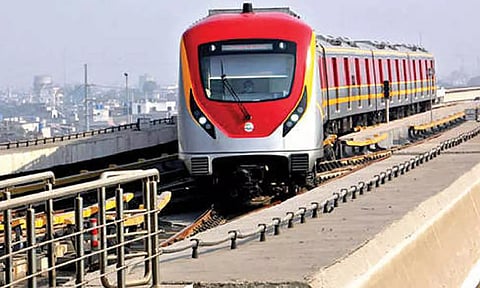

BEIJING: China’s massive Belt and Road Initiative (BRI) — backing and often building some 21,000 infrastructure projects around the world — is widely considered to be the centrepiece of President Xi Jinping’s foreign policy.
Often compared to the US Marshall Plan for Europe after World War II, Beijing has made more than $1.3 trillion in loans over the past decade or so to fund the construction of bridges, ports and highways in low and middle-income countries, according to a new report. BRI has helped to restore ancient trading routes between China and the rest of the world, hence the nickname the New Silk Road. It’s also boosted Beijing’s global influence, much to the chagrin of Washington and Brussels.
Critics say BRI has landed developing nations with unmanageable debts and left a massive carbon footprint at a time when environmental protection should be taking priority. Some countries, including the Philippines, have pulled out of projects. Others have pointed to China’s strategy of offering contracts to its own state-run firms to build infrastructure projects, often leading to opaque construction costs that countries later struggle to renegotiate. While China has committed to continue investing billions in new projects, the day of reckoning has now arrived. The bill from the past 10 years on many of those loans has now come due.
How many BRI loans have turned bad? A report published earlier this month by AidData estimates that 80% of the lending made by China in the developing world is to countries in financial distress. The US-based research house estimated that total outstanding debt, excluding interest, is at least $1.1 trillion. While the report doesn’t give a figure for how many loans have turned bad, it states that overdue repayments are soaring. The report’s authors also noted that 1,693 BRI projects are at risk and that 94 projects have either been canceled or suspended. AidData calculated that more than half of the BRI loans have now entered their principal repayment period, at a time when global base interest rates have risen sharply, loading debtor nations with an even bigger repayment burden. The report’s authors found that China has, in some cases, more than doubled the interest rate as a penalty for late payments from 3% to 8.7%.
When China first started offering loans to developing countries at the turn of the century, less than a fifth of projects were collateralised, compared to almost two-thirds today. A World Bank report earlier this year found that China has already had to dole out billions in bailout loans to BRI nations.
It is now adopting a new strategy to de-risk itself from a wave of distressed loans, which includes rescue loans that help shore up the finances of the governments it has lent to and often their central banks, AidData found.
AidData found that while China is spending about $80 billion annually on lending to low and middle-income countries, the United States is playing catch up. Washington spends approximately $60 billion in similar development finance each year, due in large part to the financing of private sector projects by the US International Development Finance Corporation.
One example of US financing is the planned construction of a deep-water shipping container terminal in Sri Lanka’s Port of Colombo, costing half a billion dollars, which was announced earlier this month. The Indian Ocean island nation is struggling to recover from a dire financial and economic crisis and its existing loan commitments to China’s BRI have hampered efforts to resolve its financial woes.